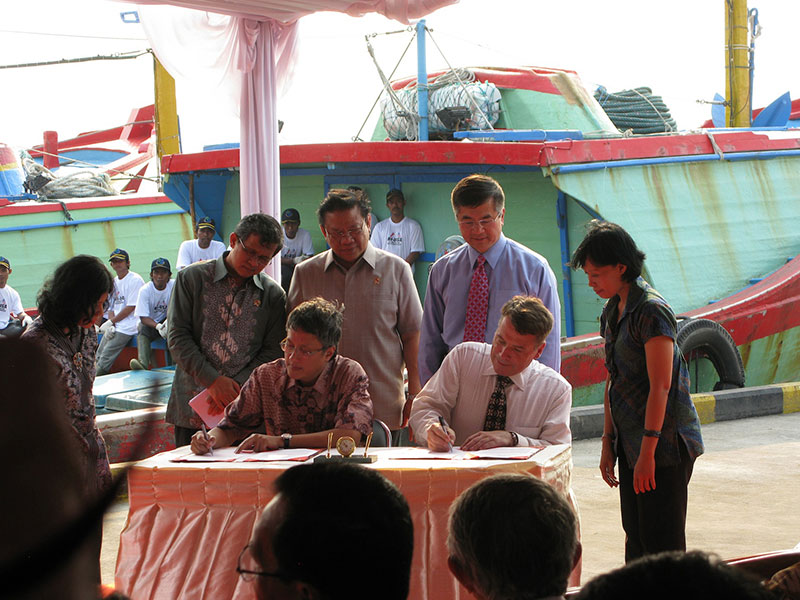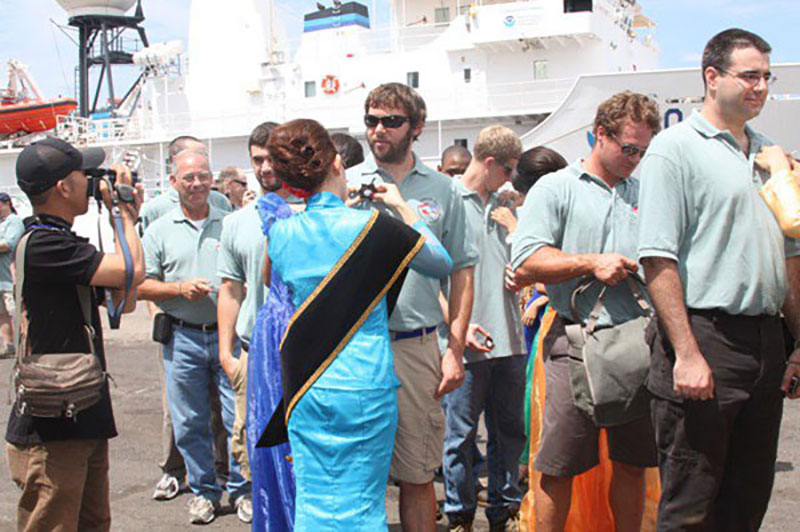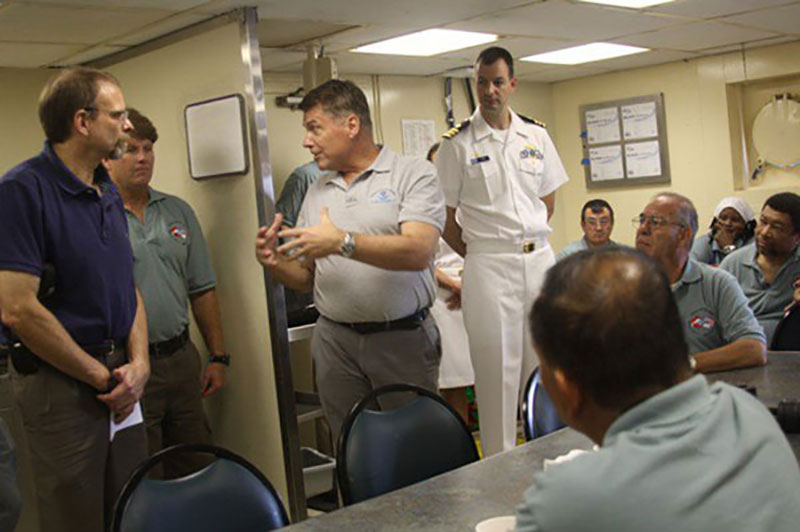
by Dr. Cameron R. Hume, U.S. Ambassador to Indonesia
June 24, 2010

Secretary of Commerce Gary Locke witnesses the signing of the Indonesia-U.S. Ocean Exploration Implementing Arrangement by Ambassador Cameron Hume and Dr. Gellwynn Jusuf of the Indonesian Ministry of Marine Affairs and Fisheries. Image courtesy of the NOAA Office of Ocean Exploration and Research, INDEX-SATAL 2010. Download larger version (jpg, 1.2 MB).
Yesterday, I had the pleasure of visiting NOAA Ship Okeanos Explorer in Bitung and participating in the opening ceremonies hosted by the Governor of North Sulawesi. The ship’s arrival at Bitung is the latest chapter in a sustained two-year long effort to build an ocean exploration science partnership between Indonesia and the United States and to bring the Okeanos Explorer to Indonesia for the first-ever visit to Indonesia of a U.S. government civilian research ship.
It’s appropriate that the Okeanos Explorer’s maiden expedition is to Indonesia. The exploration area is the heart of the Coral Triangle, the center of the Earth’s marine biodiversity. Yet little is known about this critical region.
The Indonesia-U.S. ocean exploration partnership represents the rapidly evolving partnership between the two countries. The Baruna Jaya IV, an Indonesian research vessel, will sail with the Okeanos Explorer and collect data that complements data the NOAA ship will collect. Indonesian scientists are sailing aboard the Okeanos Explorer and U.S. researchers will join the Baruna Jaya IV.

Local officials enthusiastically welcomed the ship and her crew to Bitung during a brief ceremony on June 23. Image courtesy of US Consulate General Surabaya. Download image (jpg, 109 KB).
Together, the two ships will collect baseline data about the ocean floor, ocean chemistry, and geological processes—including underwater volcanoes, fish, and other life forms. Indonesian and U.S. scientists will collaborate in analyzing the data from both ships. The expedition’s findings – of great interest to scientists, educators, and the public – will be much more complete as a result of this partnership. Each ship will collect and analyze data that would not be possible without working in partnership with the other ship.
About a year ago, President Obama delivered his now-famous Cairo speech calling for closer collaboration between American scientists and scientists from the Muslim world. The President’s Cairo vision calls for new relationships in science and technology to advance scientific understanding, promote educational opportunities, and forge stronger ties between America and Muslim majority nations. He stated: "I have made the Okeanos Explorer a priority for the Embassy because it represents the future of Indonesia-U.S. scientific collaboration. It is a concrete demonstration of the Cairo vision: two great maritime nations working in partnership and mutual scientific interest to understand the mysteries beneath the sea."

Ambassador Hume traveled from Jakarta to Bitung in order to welcome NOAA Ship Okeanos Explorer and her crew to Indonesia. Immediately after arriving onboard, he met with ship and mission personnel to discuss the importance of the expedition for Indonesia-U.S. relations. Image courtesy of US Consulate General Surabaya. Download image (jpg, 72 KB).
Twenty-first century diplomacy is much less about high-level meetings and more about people connecting to people through education, culture, technology, and science. The Indonesia-U.S. ocean exploration partnership will link American and Indonesian scientists, allow Indonesian and American students to work together, and foster a new appreciation for Indonesia’s ocean environment in both our countries. The net result: a stronger relationship between the Republic of Indonesia and the United States.
It was a pleasure to meet the Okeanos Explorer officers, crew, scientists, and technicians. Their enthusiasm for the task at hand was as infectious as the ship’s capacities and equipment was impressive. I am grateful to NOAA for working with us to bring the ship to Indonesia.
The Governor’s warm welcome to the crew underscores the importance of INDEX-SATAL 2010 and the Okeanos Explorer to the region and to Indonesia. I fully expect that we will be celebrating the discoveries and accomplishments of the Okeanos Explorer, the Baruna Jaya IV, and INDEX-SATAL 2010 long after the expedition concludes.